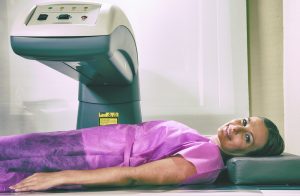 More than 10 million Americans 50 and older have osteoporosis, and roughly 34 million more are at risk, so osteoporosis is a disease that affects nearly 60% of the adult population. It is one of the most common diseases seen among older people. It is more common among women, but men are susceptible too, and the threat increases as people reach age 65 and lose bone density, leaving bones weaker and more prone to fracture.
More than 10 million Americans 50 and older have osteoporosis, and roughly 34 million more are at risk, so osteoporosis is a disease that affects nearly 60% of the adult population. It is one of the most common diseases seen among older people. It is more common among women, but men are susceptible too, and the threat increases as people reach age 65 and lose bone density, leaving bones weaker and more prone to fracture.
Osteoporosis happens to nearly everyone as we age, but some people experience a higher rate of bone loss than others, particularly women as well as men with a smaller bone structure, those with a family history of the disease, people on certain medications, smokers, heavy drinkers and those who are sedentary. Bone loss can leave a person highly vulnerable to fracture. In fact, almost 1.5 million adults suffer a fracture annually, and when it is a bone such as the hip, it can lead to complications that too-often result in death. Because osteoporosis usually offers no warning symptoms until a fracture occurs, early discovery is imperative in safeguarding against this stealthy disease.
Okay, enough of the dire warnings – we also have positive news. Once osteoporosis is diagnosed, there are effective treatments to help prevent and delay its progress, including medication, supplements and weight-bearing exercise. And diagnosis is fast and simple, thanks to a diagnostic tool called a bone densitometry test. RAO utilizes the most advanced test in the industry, the Dual Energy X-ray Absorptiometry scanner, or DEXA for short. DEXA is a low ionizing-radiation scan that delivers the highest quality bone density imaging available. The test itself is quick and painless. You simply recline on a specialized table while a highly trained RAO diagnostic technologist performs a scan of your hip, spine, femur or other bone structure. It takes only minutes and provides information about your bone density relative to average guidelines for your age and gender.
Postmenopausal women, people on long-term steroids, those with overactive parathyroid disease and individuals whose scans show abnormal bone loss can have their scans covered by Medicare. If your DEXA scan suggests you have abnormal bone loss, you will be advised by your doctor about what medications, exercises and lifestyle changes you can adopt to help thwart the course of osteoporosis, and help prevent fracture and any related risk to your health and vitality.
If you are age 50 to 64 and fall into a high-risk category or are age 65 or older, talk to your doctor about your risk for osteoporosis, and if you should have a DEXA scan before you experience fracture. It’s a simple test that can protect your quality of life – and your life itself.
352-671-4300 . www.RAOcala.com
Check Also
CUSTOMIZABLE LIGHT ADJUSTABLE LENS A GAMECHANGER FOR CATARACTS PATIENTS
All Americans have some degree of cataract change by the age of 75. As the …
 Central Florida Health and Wellness Magazine Health and Wellness Articles of the Villages
Central Florida Health and Wellness Magazine Health and Wellness Articles of the Villages



